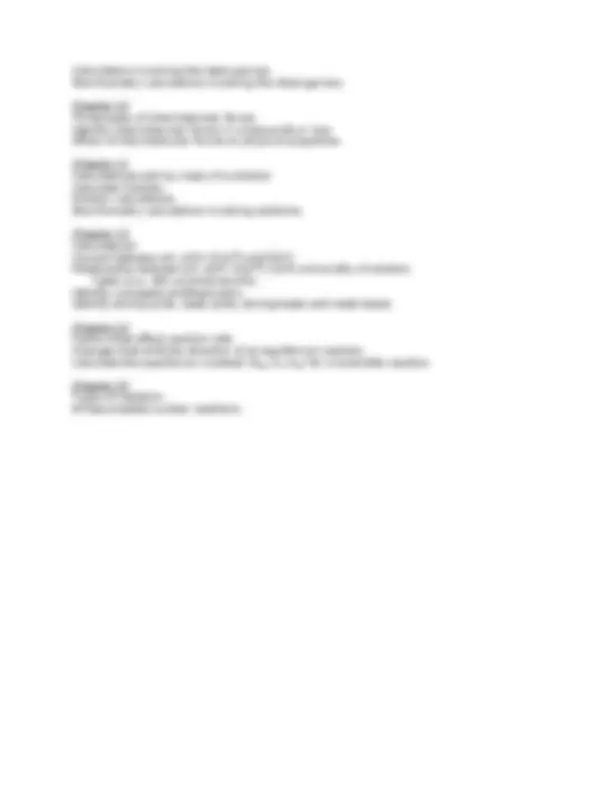



Study with the several resources on Docsity

Earn points by helping other students or get them with a premium plan


Prepare for your exams
Study with the several resources on Docsity

Earn points to download
Earn points by helping other students or get them with a premium plan
Community
Ask the community for help and clear up your study doubts
Discover the best universities in your country according to Docsity users
Free resources
Download our free guides on studying techniques, anxiety management strategies, and thesis advice from Docsity tutors
This review sheet outlines the major topics and concepts to be covered in an upcoming chemistry final exam. Topics include significant figures, types of matter, atomic theory, periodic table, electron configurations, balancing equations, molar mass, intermolecular forces, solutions, acids and bases, reaction rates, and nuclear reactions.
Typology: Study notes
Uploaded on 10/19/2008
1 document
1 / 2

This page cannot be seen from the preview
Don't miss anything!


Review Sheet The following is a list of topics that you should study for the final exam. Chapter 1 Rules for significant figures. Set up & use conversion factors. Conversion factors for English to metric units and English to English units will be given. Chapter 2 Distinguish between elements, compounds, heterogeneous mixtures and homogeneous mixtures. Physical vs. chemical changes. Calculate density. Chapter 3 Dalton’s Atomic Theory. Components of an atom. Determine no. of electrons, protons and neutrons in neutral atoms or ions. Isotopes. Chapter 4 Groups & classifications of elements on the periodic chart. Oxidation states (charges) of elements. Rules for naming compounds. Rules for writing formulas. Need to know the elements and symbols on the element list. Do not need to know polyatomic ions. Chapter 5 Relationship between shells, subshells, orbitals and electrons. Chart on p. 145 summarizes this. Write electron configurations. Trends in electronegativity & ionization energy. Chapter 6 Draw Lewis structures. Determine molecular geometry of compound or ion. Determine polarity of compound or ion. Chapter 7 Balance equations. Determine products of a double replacement reaction. Solubility rules will be given. Chapter 13 Assigning oxidation states (charges). Oxidation vs. reduction. Balancing redox reactions. Chapter 8 Calculate molar mass. Convert between mass, moles, atoms and molecules. Stoichiometry calculations including limiting reactants and % yield. Chapter 9 Combined gas law.
Calculations involving the ideal gas law. Stoichiometry calculations involving the ideal gas law. Chapter 10 Three types of intermolecular forces. Identify intermolecular forces in compounds or ions. Affect of intermolecular forces on physical properties. Chapter 11 Calculate percent by mass of a solution. Calculate molarity. Dilution calculations. Stoichiometry calculations involving solutions. Chapter 12 Calculate pH. Convert between pH, pOH, [H 3 O+] and [OH-]. Relationship between pH, pOH, [H 3 O+], [OH-] and acidity of solution. Table on p. 381 summarizes this. Identify conjugate acid/base pairs. Identify strong acids, weak acids, strong bases and weak bases. Chapter 14 Factors that affect reaction rate. Changes that shift the direction of an equilibrium reaction. Calculate the equilibrium constant (Keq, Ka, Ksp) for a reversible reaction. Chapter 15 Types of radiation. Write/complete nuclear reactions.